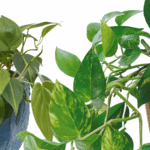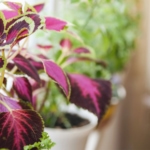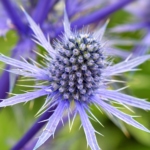What Are Air Plants And How Do They Grow?
Learn all about these fascinating plants and how to care for them. No green thumb required!
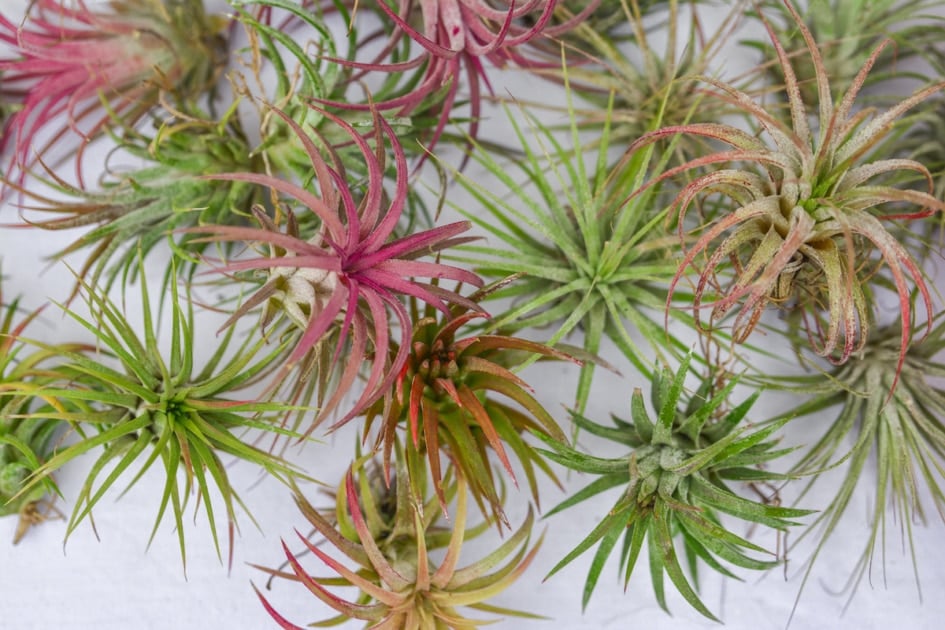
You’ve probably seen them in supermarket flower kiosks or in the garden center. Air plants are fun to collect and easy to grow, and best of all they’re a low-maintenance way to brighten your home. Follow these simple tips to get started with your own air plant garden!
What Are Air Plants?
If the term “air plants” has you scratching your head, you’re not alone. Plants that grow in air? Yes! Tillandsia spp. gets the name “air plants” because they don’t require soil to grow. They are epiphytes, which means they use their roots to cling onto supports such as tree branches and rocks, similar to the way orchids grow. Instead of soaking up water and nutrients through their roots, they use trichomes, special scale-like structures on their leaves, to do the job. Fascinating, isn’t it?
Successfully Growing Air Plants
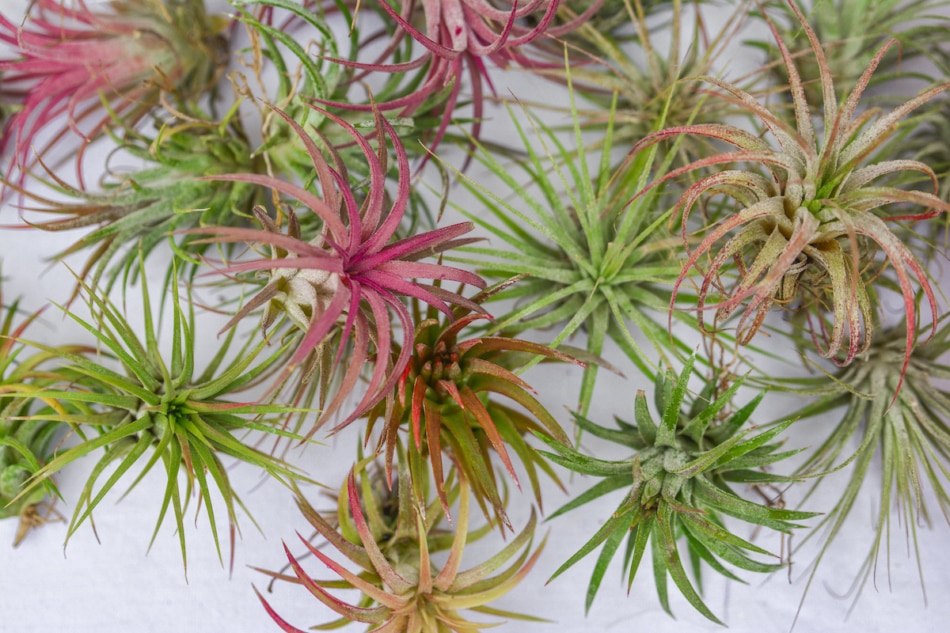
The key to success with air plants is: don’t forget to water them! Most indoor environments are very dry and air plants cannot survive on air alone. Using a spray bottle to mist air plants isn’t sufficient, although they will appreciate the attention.
Watering
Air plants need regular deep soakings. This is something to consider when you select a container to display them in; they must be removed so that they can be properly watered.
Submerge the plant in a small shallow bowl filled with water. You don’t want to have any chlorine or salts in the water, but avoid the use of distilled water. Tap water that has been allowed to sit for 24 hours is suitable. Soak the plant for approximately one hour, shake off the water, then return it to its container. Make sure to tap or shake as much water as possible off the plant as leftover water may cause rotting. Water every two weeks.
(Note: The silver-leaved varieties are from drier climates, so may need less water than green-leaved ones.)
Drought stress is one common issue with air plants, especially during the winter when our homes are extremely dry. Leaves may turn brown or begin to curl slightly. Watering should combat this. If any of the leaves die, remove them with a sharp pair of scissors.
Fertilizing
Air plants don’t need much fertilizer. They must take up nutrients through water, so use a water-soluble fertilizer meant for bromeliads and air plants and mix it according to the label. Do not over apply fertilizer or you may kill your plant. Fertilize about 2 to 3 times per year.
Give Them Adequate Sunlight
Air plants need indirect, but bright sunlight – try them in an east or west exposure. (Windows that face south may also work if you can filter the light somewhat with curtains). Cold drafts are hard on air plants, and they cannot tolerate freezing.
Displays for your air plants can be tailored to match your home’s décor. They can be grown in glass terrariums, in hanging or sitting bowls, in conch shells, or attached to wooden frames or sections of dead or living tree branches. Use your creativity and design a special place that both you and your air plants will enjoy,
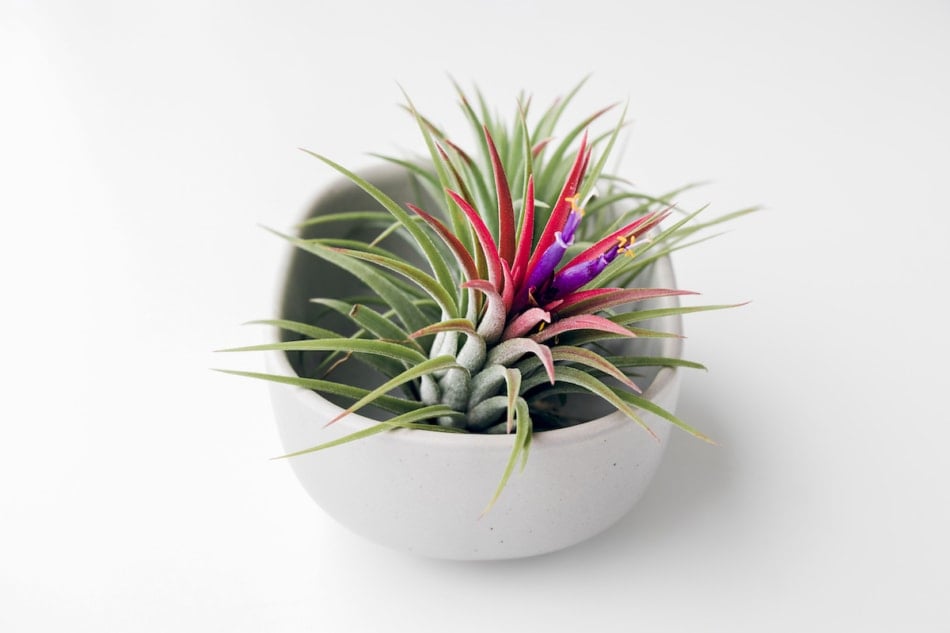
If you wish to place your air plants outside during the summer, be sure to keep them out of direct sunlight and extreme heat, or they will scorch. Watch for drought stress and water them more frequently if you have to. If you live in a cold climate, be sure to return them to the indoors long before the temperatures plummet.
Are Air Plants Parasitic?
No, air plants are not parasitic! They do not steal any nutrients or moisture from trees or other plants they may be found growing on.
Will They Bloom?
While air plants have beautiful, colorful, and textured foliage, they may bloom if you have successfully met all of their requirements. Flowers are usually borne on spikes, and come in a wide range of bright colors. Most air plants only bloom once in their lifetime, so it’s a real treat if they show off for you! Don’t forget to deadhead (remove) the blooms after they are spent, so that your air plant looks its best.
With minimal effort and care, these unusual plants can be a wonderful addition to your home!
Sheryl Normandeau
Sheryl Normandeau, BA, is a Master Gardener and writer from Calgary, Alberta, Canada. Her articles and short stories have appeared in several international publications. She is the co-author (with Janet Melrose) of the Guides for the Prairie Gardener series.


